Abstract
Understanding the interaction between bacterial cells and solid surfaces is essential to our attempts to quantify and predict the transport of microbes in groundwater aquifers, whether from the point of view of contamination or from that of bioremediation. The sorption of bacterial cells suspended in groundwater to porous medium grains was examined in batch studies. Bacterial sorption to clean quartz sand yielded equilibrium, linear, adsorption isotherms that varied with the bacterial strain used and the ionic strength of the aqueous solution. Values of Kd (the slope of the linear sorption isotherm) ranged from 0.55 to 6.11 ml g-1, with the greatest sorption observed for the highest groundwater ionic strength. These findings are consistent with the interpretation that an increasingly compressed electrical double layer results in stronger adsorption between the like-charged mineral surface and the bacterial cells. When iron-oxyhydroxide-coated sand was used, however, all of the added bacteria were adsorbed up to a threshold of 6.93 × 108 cells g of coated sand-1, beyond which no further adsorption occurred. The irreversible, threshold adsorption is the result of a strong electrostatic attraction between the sesquioxide coating and the bacterial cells. Experimental results of adsorption in mixtures of quartz and Fe(III)-coated sand were successfully predicted by a simple additive model for sorption by the two substrate phases. Even small amounts of Fe(III)-coated sand in a mixture influenced the extent of adsorption of bacterial cells. A quantitative description of adsorption in the mixtures can be realized by using a linear isotherm for reversible adsorption to the quartz grains with a y intercept that represents the number of cells irreversibly adsorbed to the Fe(III)-coated sand.
Full text
PDF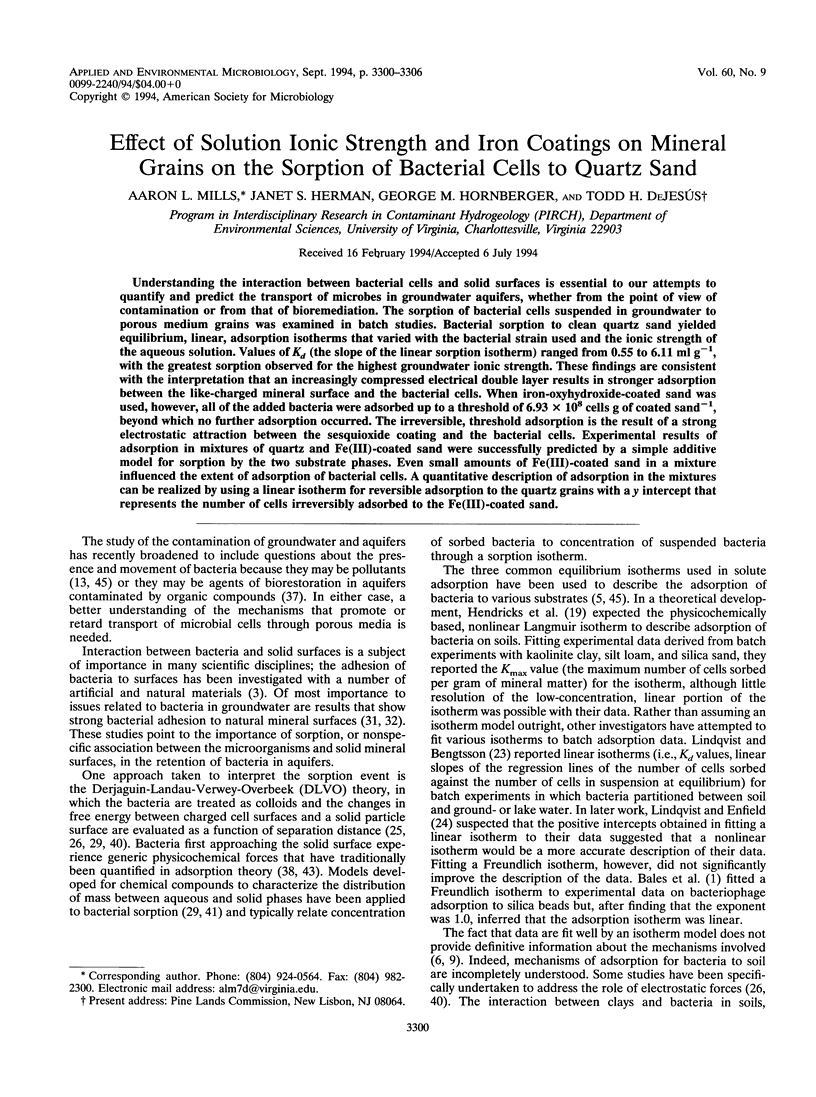
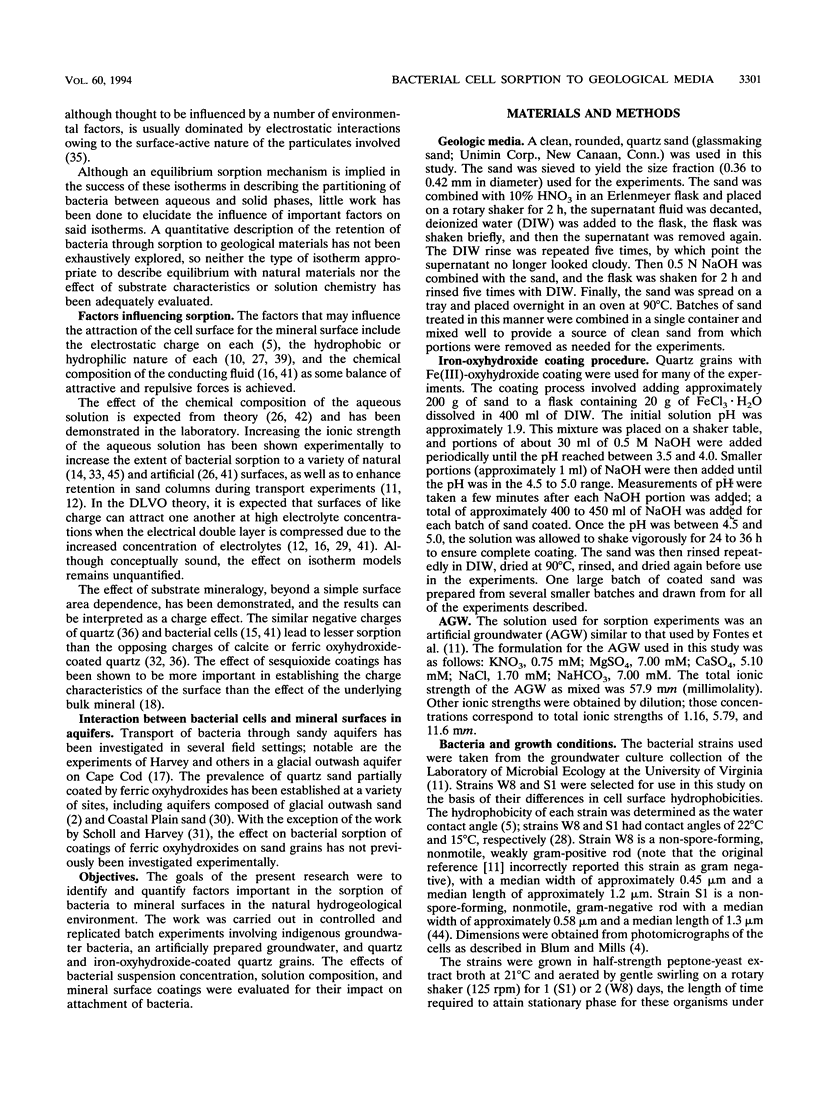

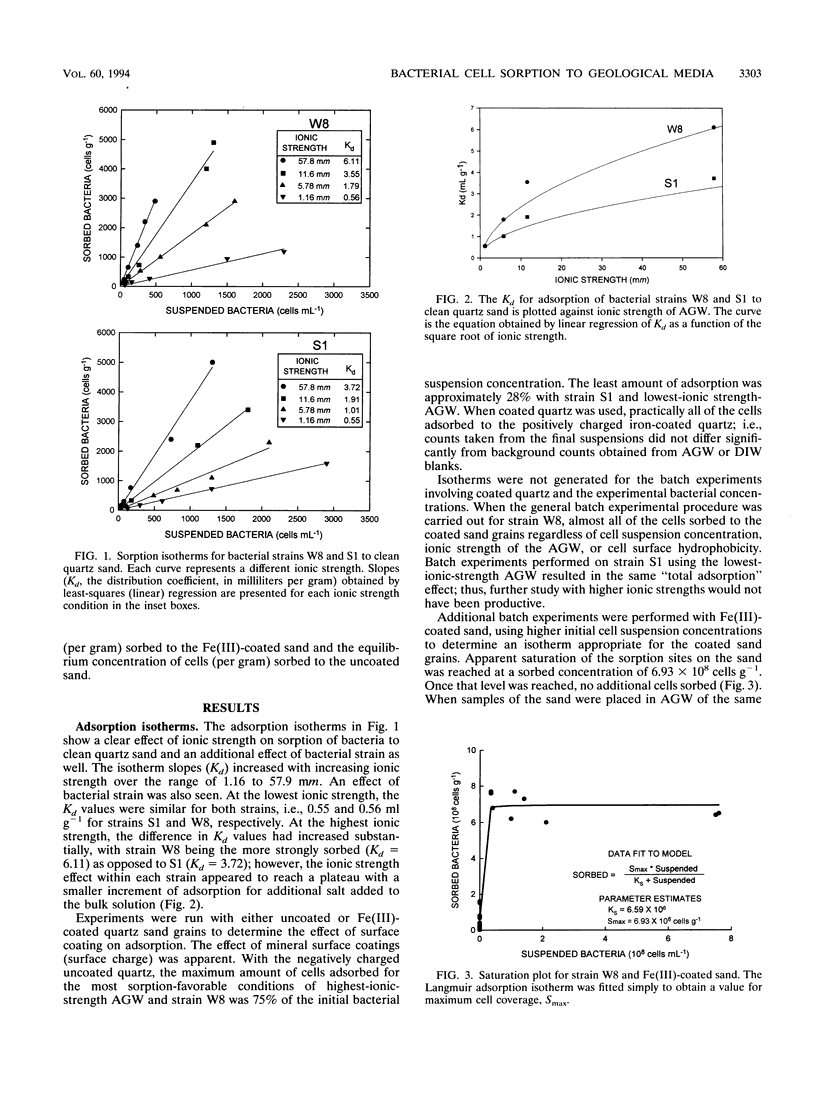
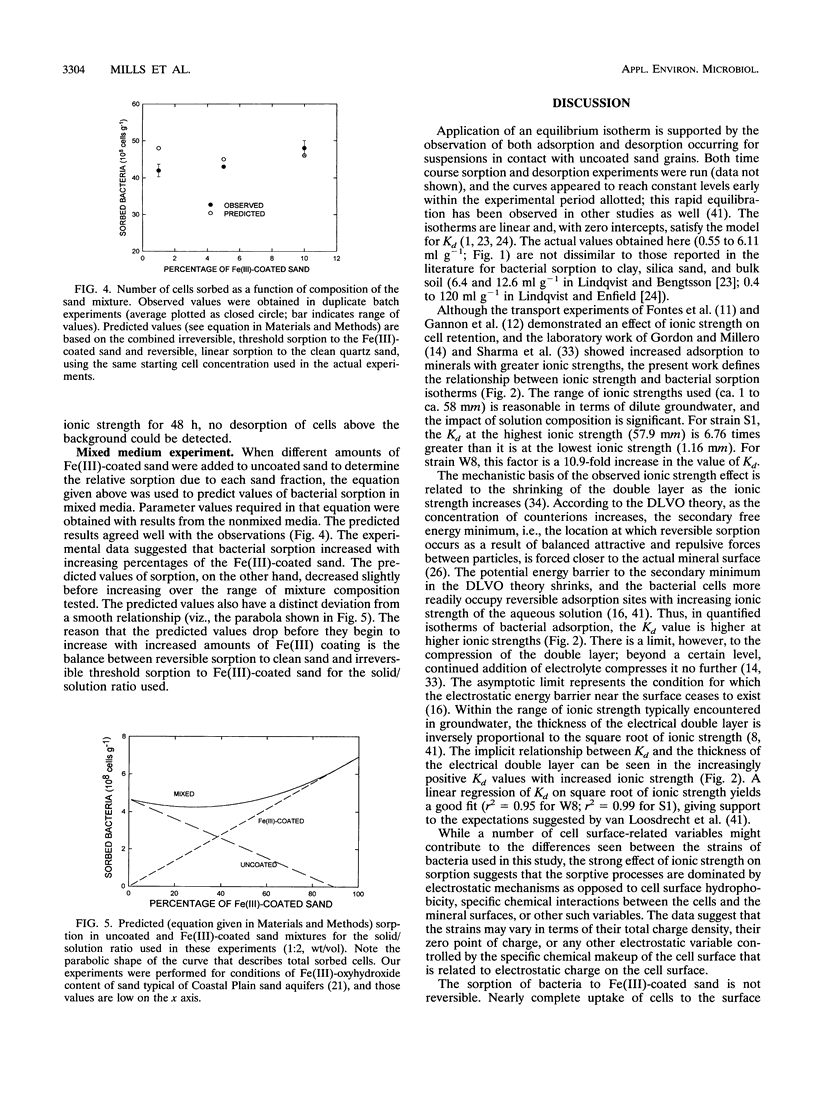
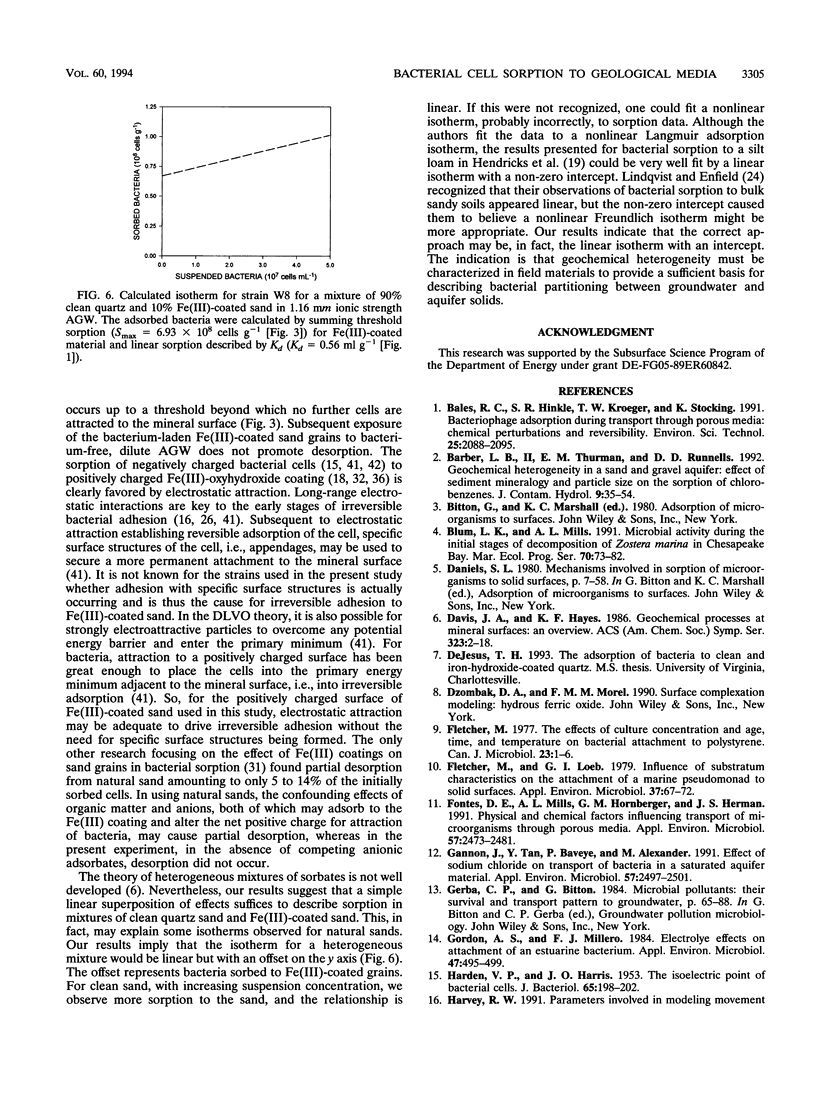
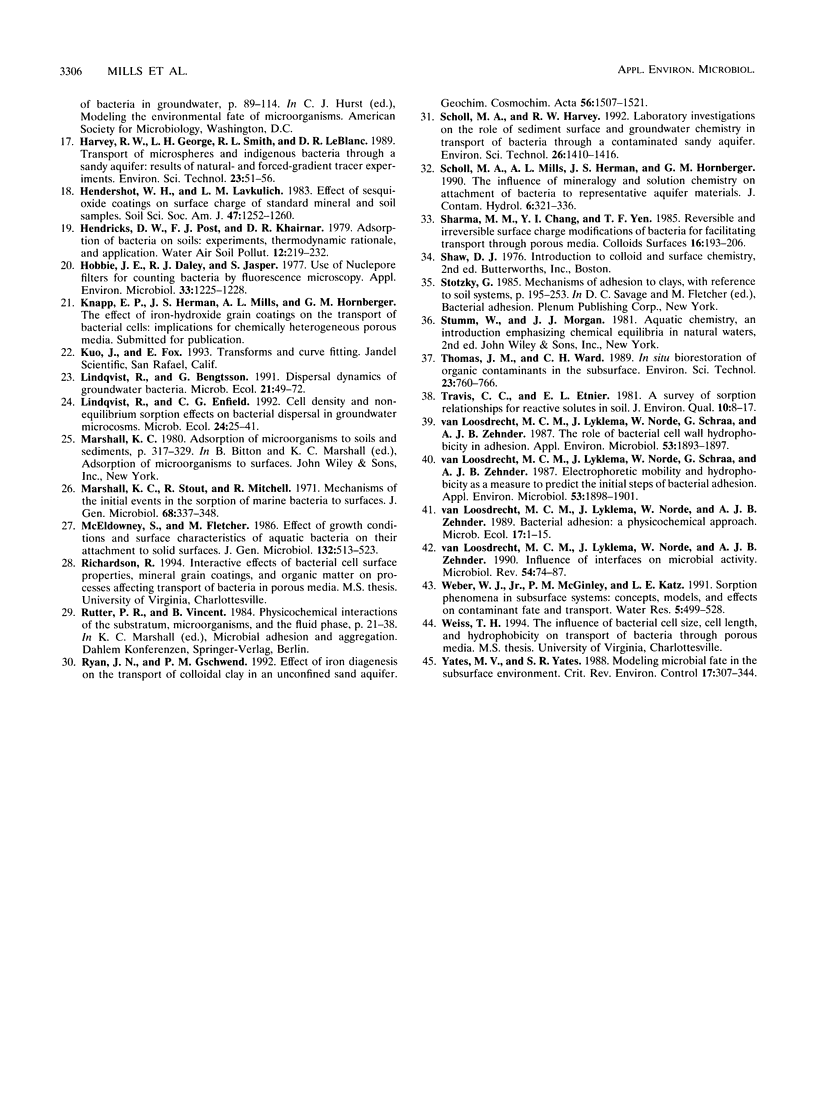
Selected References
These references are in PubMed. This may not be the complete list of references from this article.
- Fletcher M., Loeb G. I. Influence of substratum characteristics on the attachment of a marine pseudomonad to solid surfaces. Appl Environ Microbiol. 1979 Jan;37(1):67–72. doi: 10.1128/aem.37.1.67-72.1979. [DOI] [PMC free article] [PubMed] [Google Scholar]
- Fontes D. E., Mills A. L., Hornberger G. M., Herman J. S. Physical and chemical factors influencing transport of microorganisms through porous media. Appl Environ Microbiol. 1991 Sep;57(9):2473–2481. doi: 10.1128/aem.57.9.2473-2481.1991. [DOI] [PMC free article] [PubMed] [Google Scholar]
- Gannon J., Tan Y. H., Baveye P., Alexander M. Effect of sodium chloride on transport of bacteria in a saturated aquifer material. Appl Environ Microbiol. 1991 Sep;57(9):2497–2501. doi: 10.1128/aem.57.9.2497-2501.1991. [DOI] [PMC free article] [PubMed] [Google Scholar]
- Gordon A. S., Millero F. J. Electrolyte effects on attachment of an estuarine bacterium. Appl Environ Microbiol. 1984 Mar;47(3):495–499. doi: 10.1128/aem.47.3.495-499.1984. [DOI] [PMC free article] [PubMed] [Google Scholar]
- HARDEN V. P., HARRIS J. O. The isoelectric point of bacterial cells. J Bacteriol. 1953 Feb;65(2):198–202. doi: 10.1128/jb.65.2.198-202.1953. [DOI] [PMC free article] [PubMed] [Google Scholar]
- Hobbie J. E., Daley R. J., Jasper S. Use of nuclepore filters for counting bacteria by fluorescence microscopy. Appl Environ Microbiol. 1977 May;33(5):1225–1228. doi: 10.1128/aem.33.5.1225-1228.1977. [DOI] [PMC free article] [PubMed] [Google Scholar]
- van Loosdrecht M. C., Lyklema J., Norde W., Schraa G., Zehnder A. J. Electrophoretic mobility and hydrophobicity as a measured to predict the initial steps of bacterial adhesion. Appl Environ Microbiol. 1987 Aug;53(8):1898–1901. doi: 10.1128/aem.53.8.1898-1901.1987. [DOI] [PMC free article] [PubMed] [Google Scholar]
- van Loosdrecht M. C., Lyklema J., Norde W., Schraa G., Zehnder A. J. The role of bacterial cell wall hydrophobicity in adhesion. Appl Environ Microbiol. 1987 Aug;53(8):1893–1897. doi: 10.1128/aem.53.8.1893-1897.1987. [DOI] [PMC free article] [PubMed] [Google Scholar]
- van Loosdrecht M. C., Lyklema J., Norde W., Zehnder A. J. Influence of interfaces on microbial activity. Microbiol Rev. 1990 Mar;54(1):75–87. doi: 10.1128/mr.54.1.75-87.1990. [DOI] [PMC free article] [PubMed] [Google Scholar]


